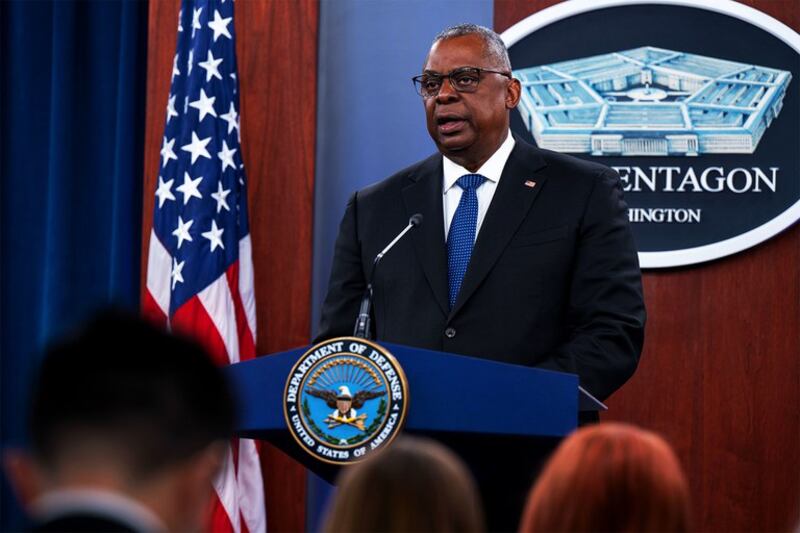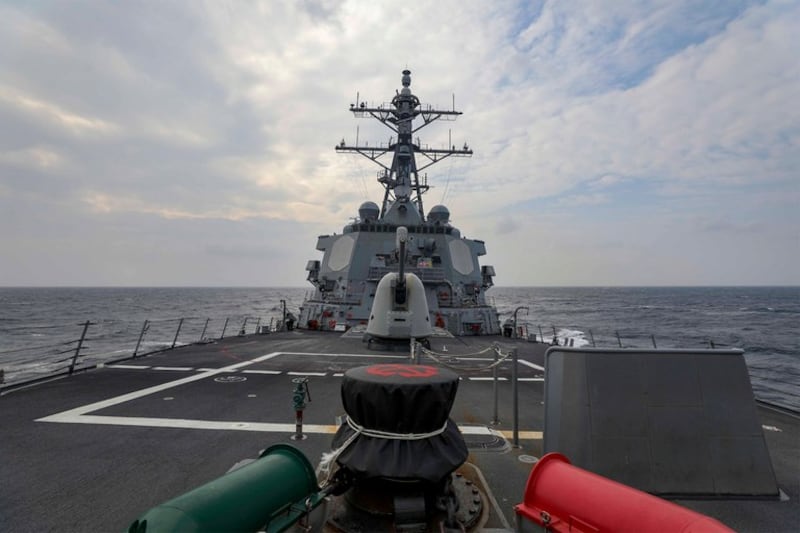The U.S. Defense Department has released its long-awaited 2022 National Defense Strategy, identifying China as "the overall pacing challenge" while Russia remains an "acute threat" to the United States.
The 80-page document, released two weeks after the White House’s National Security Strategy and the first by President Biden’s defense policy team, aims “to provide a clear picture of the challenges we expect to face,” and “will set the Department’s course for decades to come.”
“The PRC remains our most consequential strategic competitor for the coming decades,” said Defense Secretary Lloyd Austin, using an acronym for China’s official name, the People’s Republic of China.
Austin said he reached this conclusion based on the PRC’s increasingly coercive actions to reshape the Indo-Pacific region and the international system “to fit its authoritarian preferences,” alongside the awareness of the PRC’s intentions and the rapid modernization of China’s military.

Biden previously noted in the National Security Strategy that “China is the only country with both the intent to reshape the international order, and, increasingly, the economic, diplomatic, military, and technological power to do so.”
Meanwhile, “Russia can’t systemically challenge the United States over the long term,” Austin told reporters in Washington on Thursday.
He acknowledged that the Russian aggression “does pose an immediate and sharp threat to our interests and values,” especially with Putin’s “reckless war of choice against Ukraine.”
And that’s why the National Defense Strategy “bluntly describes Russia as an acute threat, and we chose the word ‘acute’ carefully,” he said.
The National Defense Strategy was released alongside the Nuclear Posture Review and the Missile Defense Review which describe the U.S. nuclear and missile defense policies respectively.
A classified version of the document was presented to the U.S. Congress in March.
Top competitor
The document outlined four priorities of the Defense Department with the top one being “defending the homeland, paced to the growing multi-domain threat posed by the PRC.”
Mentioned at least 90 times throughout the text, China is seen as seeking to “undermine U.S. alliances and security partnerships in the Indo-Pacific region.”
Beijing has been using its growing military capabilities and economic influence “to coerce its neighbors and threaten their interests.”
The document mentioned China’s policy and activities toward Taiwan that “risk miscalculation and threaten the peace and stability of the Taiwan Strait.”
“The Department will support Taiwan’s asymmetric self-defense commensurate with the evolving PRC threat and consistent with our one China policy,” it reaffirmed.
However, “a key objective of the National Defense Strategy is to dissuade the PRC from considering aggression as a viable means of advancing goals that threaten vital U.S. national interests,” it said.
“Conflict with the PRC is neither inevitable nor desirable.”
The U.S. Defense Department therefore supports efforts to develop terms of interaction with China that are “favorable to our interests and values.”

While the U.S. has substantial experience in dealing with Russia in terms of nuclear crisis management, the strategy said, it “has made little progress with the PRC despite consistent U.S. efforts.”
Beijing could possess at least 1,000 deliverable nuclear warheads by 2030, according to the Pentagon, and there are growing concerns about deepening relations between China and Russia.
“Although diverging interests and historical mistrust may limit the depth of their political and military cooperation, the PRC and Russia relationship continues to increase in breadth,” the document warned.
Together, China and Russia now also “pose more dangerous challenges” to U.S. homeland security, it said.
Building deterrence capacities
While maintaining a safe nuclear deterrent and taking steps to reduce the risks of a nuclear war, the strategic paper said the U.S. “will continue to modernize our nuclear forces, the ultimate backstop to deter attacks on the homeland and our allies and partners.”
In the fiscal 2023 budget, the Defense Department made a request for $34 billion “to sustain and modernize our nuclear forces.”
The National Defense Strategy also “emphasized collaboration with allies and partners to build joint capability, co-development of technology, combined planning and greater intelligence and information sharing,” said Malcolm Davis, a senior analyst at the Australian Strategic Policy Institute.
The document has drawn some criticism.
Doug Lamborn, a Republican congressman and a member of the House Armed Services Committee, wrote on Twitter that the new defense strategy “reflects the harrowing truth that the Biden Administration is overwhelmed by the sheer number of threats they must confront and appears fundamentally unprepared to make the necessary decisions.”
Defense One, a defense-focused publication, also expressed concerns.
“The Pentagon’s arguably most important document outside of the budget request is little more than a boiled-down reduction of every speech and press conference that Biden administration officials have given in nearly two years since taking office,” executive editor Kevin Baron wrote.
This story was produced by Radio Free Asia (RFA), a news service affiliated with BenarNews.
